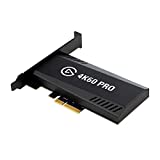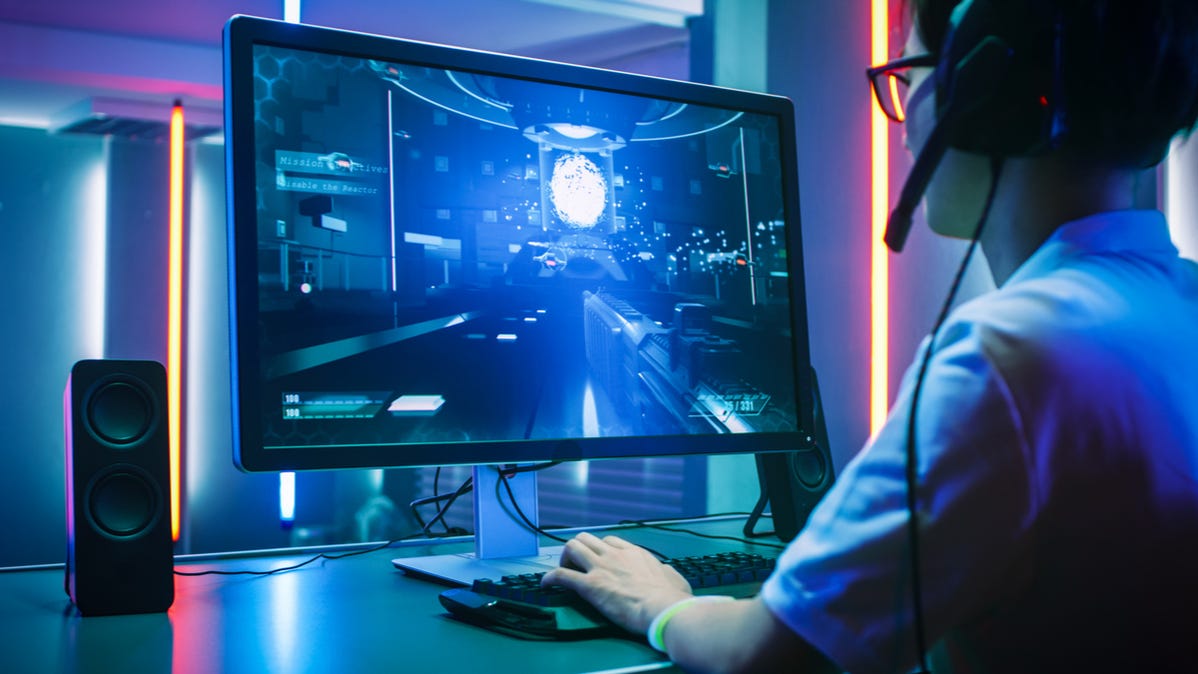
You may have noticed that your computer allows you to select a resolution higher than the resolution of your monitor. This may be counterintuitive at first, since your screen can’t show that extra detail, so why do it? Here’s where going beyond your native resolution brings rewards.
Taking High-Res Screenshots
If you need to take screenshots of what’s on your computer screen, then usually, that screenshot will match the resolution of your display. So if you have to crop and then resize parts of that screenshot for your needs, things can get pixelated fast.
By setting your “virtual” resolution to a higher number than your monitor’s native pixel count, you’ll get a screenshot that matches the virtual resolution instead. This is also great if you want to record your computer screen for a 4K video tutorial since the computer screen footage will match the crispness of the content your 4K video camera captures.
Streaming at Higher Resolutions
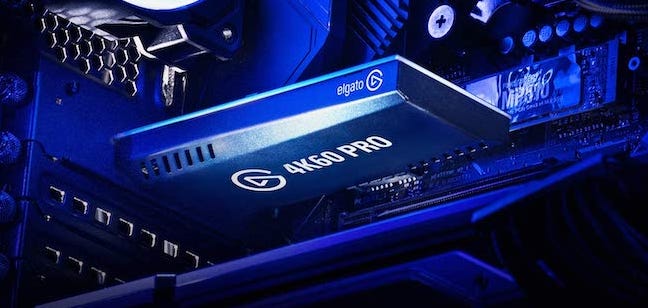
If you want to live stream your computer screen, using a higher virtual resolution means you can stream a higher-quality image to your viewers regardless of your current monitor. Just remember to adjust your computer’s scaling option so that buttons, text, and other screen elements are still readable to you on your screen.
Elgato 4K60 Pro MK.2, Internal Capture Card
Perfect for capturing 4K console footage or gaming footage from a second PC, the Elgato 4K60 Pro MK.2 offers seamless capture and up to 240Hz passthrough.
Supersampling Games
One of the main reasons this feature exists in the first place is thanks to a desire to supersample games. Supersampling is the opposite of upscaling, where a low-resolution image is scaled up to look good on a high-resolution monitor.
The game is rendered at a higher resolution with supersampling and then scaled down to match the monitor’s native resolution. This has multiple benefits, not least of which is reducing aliasing. This is where straight edges in the game seem jagged and stair-stepped in nature.
Supersampling is the highest quality form of anti-aliasing, but it’s also the most performance-intensive. Using a high virtual resolution for games is only viable if you have lots of performance to spare.
Some elements of video game rendering also scale in quality with a resolution. Shadows, for example, often look better when downscaled than at native resolution. Reflections that are at a fixed scale of the target resolution (e.g. quarter resolution) also benefit from supersampling.
Getting Better Base Resolutions With DLSS and FSR

Upscaling technologies such as NVIDIA’s Deep Learning Supersampling (DLSS) and AMD’s Fidelity Super Resolution (FSR) have “base resolutions” from which the upscaled image is derived. Usually, you have no control over the base resolution other than by using different quality presets, but if you use a higher virtual target resolution, you’ll increase the base resolution.
This opens up more options for performance and image quality balance. It also allows you to use technology such as DLSS to improve image quality rather than increase performance.
To illustrate, if you have a 1440p monitor, but set your virtual resolution to 4K, DLSS could have a base resolution of 1440p, depending on the DLSS quality level you select. Now DLSS is creating a 4K image, and then it’s being downsampled to 1440p. This gives you some of the advantages of rendering at 4K natively and then scaling it down to 1440p.
This is effectively what technologies such as NVIDIA’s DLAA (Deep Learning Antialiasing) does by design, but using a virtual resolution lets you get a similar result even if the game does not support DLAA.
How to Go Above Your Native Resolution
After looking at these benefits, you may wonder how to set your resolution to a higher number than your monitor can handle.
The exact details vary depending on your GPU brand and model. It’s not possible to cover them all in detail here, but different GPU makers such as Intel, AMD, and NVIDIA offer their own individual tutorials for enabling the feature.
Using NVIDIA as an example, you’ll find the “Dynamic Super Resolution” options alongside other resolution options in the NVIDIA Control Panel.
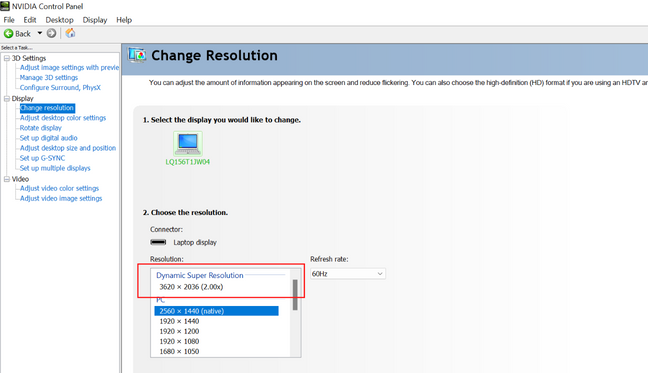
On a Mac, head to Apple Menu > System Preferences > Displays and then switch the resolution option to “Scaled.”
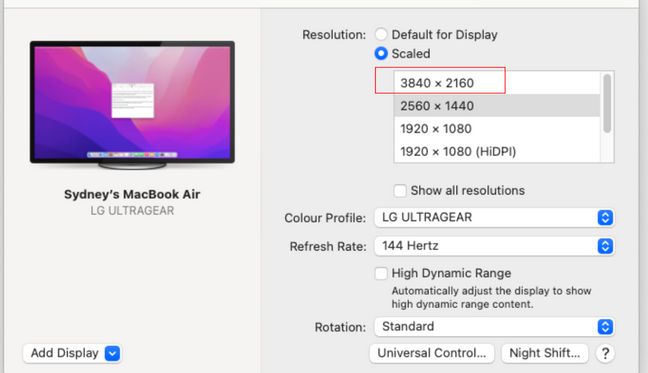
You should see an option above your connected display’s native resolution. Keep in mind that a MacBook’s internal display does not offer this option.
Suppose you have multiple displays connected at once. In that case, the path changes to Apple Menu > System Preferences > Displays > Display Settings, at which point you need to select the correct display from the left-hand sidebar.
Some video games have resolution scaling options built into the menus. Grand Theft Auto V, for example, lets you set a resolution scale above 1x, so you can render the game at higher resolutions and then downsample to your native resolution for a crisper result.
The option to exceed your monitor’s physical resolution limits is much more useful than you’d think at first. Once you get your head around the concept, you’ll appreciate having the option.

